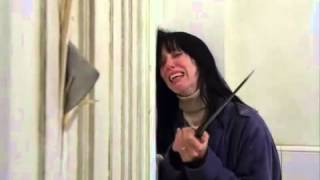 Males are more likely to be fans of horror films than girls, and this is the stereotypical thrill seek and enjoyment of seeing gore and violent acts towards other humans.
Males are more likely to be fans of horror films than girls, and this is the stereotypical thrill seek and enjoyment of seeing gore and violent acts towards other humans. The disturbing scenes that they watch frighten them, but the fact that it is fictional changes them from being real, as we have a sense of control over what is real and what is not from true acts of violence, and ones in films. Zillman and his colleagues exposed 36 male and 36 female students to a horror movie in the presence of someone of the opposite sex. Men enjoyed the film more when they were with a distressed woman, and women enjoyed in more when with a mastering man.
 It also links to gender socialization from a quote from Sparks; “Men often like [scary films] as date movies because women are more likely to seek physical closeness when they’re scared, and men can show off their strength and bravery,” Cantor said. (This is aptly called “the cuddle effect.”)
It also links to gender socialization from a quote from Sparks; “Men often like [scary films] as date movies because women are more likely to seek physical closeness when they’re scared, and men can show off their strength and bravery,” Cantor said. (This is aptly called “the cuddle effect.”)Males tend to like this genre more because it makes them seem brave if they show no fear and simply laugh at the gore and scary themes, because they do not want to be seen as a coward, and more dominant.

Seeing someone get possessed, or getting cut in half is more enjoyable to watch when you have no fear of it happening to you, but some people can be paranoid that they are afraid of what they are watching in case it could happen to them.
In a study, more women chose scares over mindless violence, this is proof that men like to prove to people that nothing scares them or grosses them out, and they are fearless.

 A Nightmare on Elm Street (1984)
A Nightmare on Elm Street (1984) Halloween (1978)
Halloween (1978) Friday the 13th (1980)
Friday the 13th (1980)







